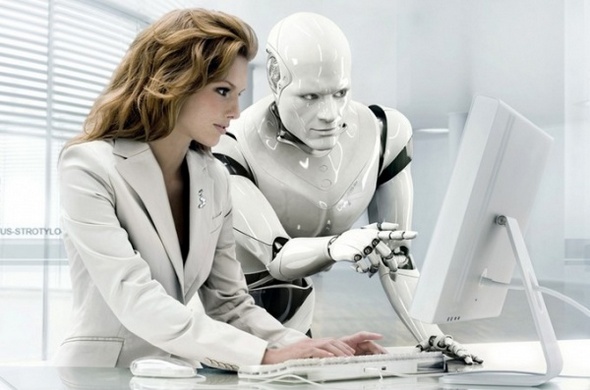The integration of AI and automation has the potential to transform organizational structures in today's quickly changing economic world. In order to build agile, effective, and future-ready businesses, executives and HR leaders must fully grasp how to navigate this disruptive period and embrace the power of technology.
The Changing Paradigm of Work
The rise of AI and automation technologies has introduced a new paradigm of work. Tasks that were once performed by humans are now being automated, leading to increased efficiency and accuracy. While these advancements bring numerous benefits, they also raise questions about the role of human employees in the workplace.
Redesigning Roles and Responsibilities
One of the primary challenges HR leaders face in this AI-powered environment is the need to redesign roles and responsibilities. As routine tasks become automated, employees can shift their focus toward higher-value activities that require creativity, critical thinking, and emotional intelligence.
Building a Culture of Adaptability
In a world driven by AI, organizational architecture must change to account for the changing nature of work. In order to encourage people to embrace change, continually upskill, and take charge of their career growth, HR directors should foster a culture of flexibility. To guarantee that staff members feel supported during the transition, this cultural transformation calls for strong leadership and efficient communication.
Data-Driven Decision-Making
In the age of AI and automation, data becomes a valuable asset. HR leaders can harness data analytics to gain insights into workforce performance, identify areas for improvement, and make informed decisions. This data-driven approach allows organizations to optimize their talent management strategies, from recruitment and onboarding to performance evaluations and career development.
The Human-AI Partnership
Rather than viewing AI and automation as a threat, forward-thinking organizations can recognize the potential for optimization between humans and machines. HR leaders can facilitate the integration of AI as a tool to enhance decision-making, streamline cumbersome administrative tasks, and improve employee experiences. This partnership empowers employees to leverage AI's capabilities while retaining their unique human skills.
Reskilling and Upskilling Initiatives
Organizations should consider giving reskilling and upskilling efforts top priority if they want to succeed in the age of AI and automation. In order to guarantee that employees have the skills necessary to perform in their professions, HR directors can identify skill shortages in the workforce and put training programs into place. Organizational growth becomes based on continuous learning.
Wrapping it up
In the era of AI and automation, organizational design is a dynamic process that calls for proactive leadership, a dedication to employee growth, and an openness to change. By embracing this shift, executives and HR leaders can position their companies as industry leaders in utilizing technology to promote creativity, efficacy, and long-term success. Organizations may successfully traverse this new era by establishing a culture of adaptability, data-driven decision-making, and collaboration between humans and machines.
Latest posts by Tresha Moreland (see all)
- Navigating Ethical Dilemmas in Organizations - April 28, 2024
- Recession 2008 Versus 2024: Lessons Learned and Key Workforce Differences - April 24, 2024
- Why Layoffs Fall Short: Embracing a Holistic Approach to Cost Savings - April 21, 2024













